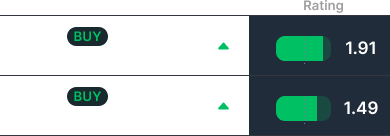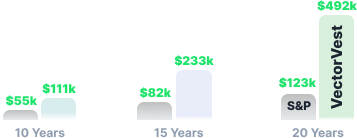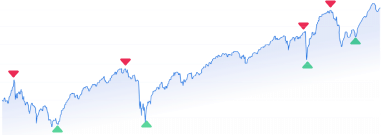By Leslie N. Masonson, MBA
On January 22, 1993, a groundbreaking development unfolded on the American Stock Exchange (AMEX): the first U.S.-listed exchange-traded fund (ETF) made its debut. This financial innovation, introduced by the State Street Global Advisors, bore the name SPDR® S&P 500 ETF with the ticker symbol SPY. It boasted a unique characteristic, comprising a diversified basket of 500 stocks that tracked the performance of the well-known S&P 500 Index. This ETF was specifically tailored for trading on a stock exchange therefore it was bestowed with its moniker.
What made this event truly noteworthy was that, prior to its introduction, the S&P 500 Index was solely accessible to investors via a mutual fund wrapper. The arrival of the SPY ETF marked the first time that the general public could buy this index at any point during regular market trading hours. This departure from the traditional mutual fund setup, which only offered end-of-day transactions, presented a compelling advantage to investors, and especially fast-paced traders.
Essentially, an ETF embodies a marketable security that holds an underlying portfolio of diverse assets such as stocks, bonds, or commodities. Notably, it trades like an individual security on a designated exchange, such as the legendary New York Stock Exchange (NYSE), during standard market hours—Monday through Friday, from 9:30 a.m. to 4:00 p.m. Eastern Time.
Throughout the day, the price of an ETF fluctuates in response to the changing values of the individual securities held within its portfolio. It is worth mentioning that, akin to stocks, ETFs can be traded before and after regular market hours. However, it is important to note that trading activity during these extended hours is comparatively thinner, and the bid-to-ask spreads for less actively traded ETFs may be wider.
Fast forward to the present, and the landscape of ETFs has undergone a remarkable transformation. In 2022, investors purchased $609 billion in ETFs even with a declining stock and bond market, according to the Investment Company Institute. Today, there exist a wide range of 3,149 ETFs, amounting to a substantial $6.97 trillion in assets. To describe the launch of the SPY as a watershed moment in market history would be a profound understatement. Yet, in terms of total assets, ETFs currently account for only about 25% when compared to mutual funds. Nonetheless, these investment vehicles continue to ascend in both size and popularity with each passing year. And in the past decade, ETF share issuance has hit $4.1 trillion.
The realm of individual ETFs offers investors a broad array of choices, spanning various asset classes such as stocks, bonds, commodities, and even more specialized vehicles. This flexibility empowers investors to craft portfolios tailored to their preferences and goals. As a common example, some investors opt for a straightforward approach by allocating 60% of their funds to a widely recognized ETF like SPY, while placing the remaining 40% into a bond ETF such as Vanguard’s Total Bond fund (BND). Periodically, they may readjust the portfolio to restore the original ratio, ensuring that it remains balanced and aligned with their desired asset allocation, even if the stock market experiences a particularly volatile year.
A quick glance at ETFAction.com reveals 57 ETFs that track the S&P 500 Index in various forms. These offerings come from reputable sponsors such as iShares, Schwab, SPDR, Vanguard, ProShares, Invesco, Xtrackers, and Global X, boasting a cumulative total of $1.36 trillion in assets under management (AUM). It is worth noting that the top five sponsors have impressively low expense ratios of just 0.03%. This bodes well for long-term investors who adhere to a buy-and-hold approach, as the minimal costs enhance the potential for compounding returns over the course of several decades.
One of the remarkable outcomes of the ETF evolution has been the democratization of the stock market itself. Everyday individuals now have access to an instrument that is easily comprehensible, simple to buy and sell, and does not entail any transaction costs. This paradigm shift has resulted in over 70% of financial advisors recommending ETFs to their clients, a stark contrast to the early years when these innovative investment vehicles were scarcely recognized as viable alternatives to traditional mutual funds. More and more retail investors and institutional investors are gravitating to ETFs each year, and this trend is expected to accelerate going forward.
A major advantage of ETFs lies in their relatively low expense ratios when compared to their mutual fund counterparts. Additionally, ETFs offer tax efficiency due to their passive management approach, resulting in fewer transactions throughout the year compared to actively managed portfolios.
For investors and traders seeking to navigate the vast universe of ETFs, tools like the VectorVest ETF Viewer prove invaluable. This comprehensive resource tracks a comprehensive 1,864 ETFs, ranking them based on a multitude of critical metrics such as the master indicator VST, as well as RT and CI, among other customizable data columns. The viewer conveniently presents the top-ranked ETFs at the forefront, allowing users to conduct detailed evaluations, including chart analysis, to assess their potential as investment candidates.
Subscribers of VectorVest gain access to the full range of information available in the ETF Viewer screen. By simply clicking on any listed ETF, a plethora of choices materialize, providing in-depth insights such as comprehensive stock analysis reports, metric interpretations, fundamental information, news from finance outlets like Yahoo Finance, historical stock prices spanning years, industry and sector rankings, upcoming dividend dates; stock, industry, and sector charts, and much more. The multifaceted viewer equips investors with a holistic view, enabling them to extract the most value from their analysis.
In the next ETF article, I will delve into a detailed explanation of the major distinctions between ETFs and mutual funds. And then in a future article I will explore the diverse types of ETFs available for investment and trading, shedding light on the extensive range of opportunities awaiting discerning investors. Stay tuned for a continuing education on this fascinating investment tool.
Want These Types of Insights at Your Fingertips so You Can Win More Trades?
Use VectorVest to analyze any stock free. VectorVest is the only stock analysis tool and portfolio management system that analyzes, ranks and graphs over 18,000 stocks each day for value, safety, and timing and gives a clear buy, sell or hold rating on every stock, every day.
Before you invest, check VectorVest! Click here to ANALYZE ANY STOCK FREE and see our system in action!
What you should do next…
- Get our latest blogs delivered right to your inbox, subscribe to our newsletter.
- The market moves fast! Get our most current evaluation of this stock with our FREE stock analysis tool.
- Looking for stock picks? Not sure if now is the right time to buy/sell? For a limited time, enjoy the full benefits of a 30-day subscription to VectorVest for only [offer_txt] (usually up to [saving_txt]/month) . Get access to our full list of screeners showcasing our top stock picks that tell you exactly what to buy, when to buy, and when to sell.















